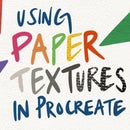Introduction: How to Set an Etching Press to Print Intaglio or Relief Style
In this instructable, you'll learn how to set an etching press to print both intaglio and relief style prints.
Supplies
Etching press (you probably don't have one of these at home, but if you're ever in an open access print studio or university art studio, you'll mostly likely be able to access a press of this style)
Printing blankets (in this tutorial I use 1.5mm, 3mm and 6mm blankets)
Lino runners
Scrap cardboard runners
Newsprint paper
Step 1: Setting the Press to Print Intaglio: Raising the Roller
Intaglio covers any type of printmaking where you use a lot of pressure to pick up the ink from the grooves of a printing plate, such as etching, aquatint, drypoint and metal engraving. Most printmakers printing intaglio use an etching press to do this, due to the large amount of pressure required, which is a press with a metal/wood bed sandwiched between a top and bottom roller. As you roll your plate and paper through the press, the pressure from the rollers transfers the ink from your plate to your paper.
The first step for setting an etching press to print intaglio plates is to raise the roller so that you can get your blankets into place. Always raise both of the pressure spindle screws at the same time if possible so that the roller stays level. If you bring up one side at a time, you can damage the mechanism in the roller. If you can’t reach both spindles at the same time, raise one side a little, then the other side and keep swapping back and forth until you’ve raised the roller high enough.
Step 2: Placing Your Blankets in the Press
The pressure from your rollers is transferred evenly to your plate with the aid of cushioning from a set of woollen blankets.
Slide your blankets under the roller and smooth them down. If you’re using more than one blanket, put the thickest one near the top roller and the thinnest one near the bed. Here, I set my press with a 1.5mm blanket closest to the press bed, a 3mm blanket in the middle and a 6mm blanket on top. How many blankets you use will depend on what you’re printing. A lot of people only use two blankets, usually a 3mm and 6mm, and if you’re printing a collagraph plate or a mono print, you might only use one thick blanket. A general rule of thumb is that the finer your image is, the finer your blankets should be.
Crank down your pressure screws evenly until you hit the blankets. My press isn’t geared, so when I reach the bed the spindles go slack. When you hit this point, continue to screw the spindles down until you reach the pressure you need for your particular plate. How much pressure you need will depend on the size and type of plate you’re printing, and you might need to do some testing to get the pressure correct.
Step 3: Checking the Pressure of an Intaglio Plate
To check the pressure, put one of your plates in place (it doesn't need to be inked up) and cover the top or bottom edge with a scrap of printmaking paper. Run the plate through the press and check the scrap of paper to make sure the emboss mark is clear and even on both sides.
Step 4: Using an Etching Press to Print Relief Style
To set your press for printing relief plates like lino and woodcuts, it’s a good idea to put some runners the same height as your block on either side of the press. I made myself a pair of lino runners with offcuts from a large piece of lino, and these also work well when I’m printing plywood plates. You don’t need a lot of pressure to print relief plates. Using runners helps the press bed roll evenly, and they stop the roller dropping when it hits the edge of your plate.
Step 5: Setting the Pressure for a Relief Plate
When you have your runners in place, screw down both of the pressure spindles evenly until the roller reaches the top of the lino, then screw them down just a tiny bit further. When you print your block, you can pack it with as many sheets of newsprint as you need to fine tune and adjust the pressure to your liking.
Step 6: Setting a Press for Low Relief Plates
If you have a relief plate that’s an unusual height, you can make some runners from scrap cardboard. Here you can see that I cut up a cereal box into a pair of runners. The process is the same as the previous step, where I used two strips of lino as runners. After my first pressure test I realised that I needed the runners to be a little thicker, so I added some extra layers of cardboard in before checking the pressure a second time. Again, when you have the height and pressure roughly correct, you can use sheets of newsprint to pack out your print so that the pressure is perfect.
And those are the basics for setting an etching press to print both intaglio and relief styles. Happy printing!













